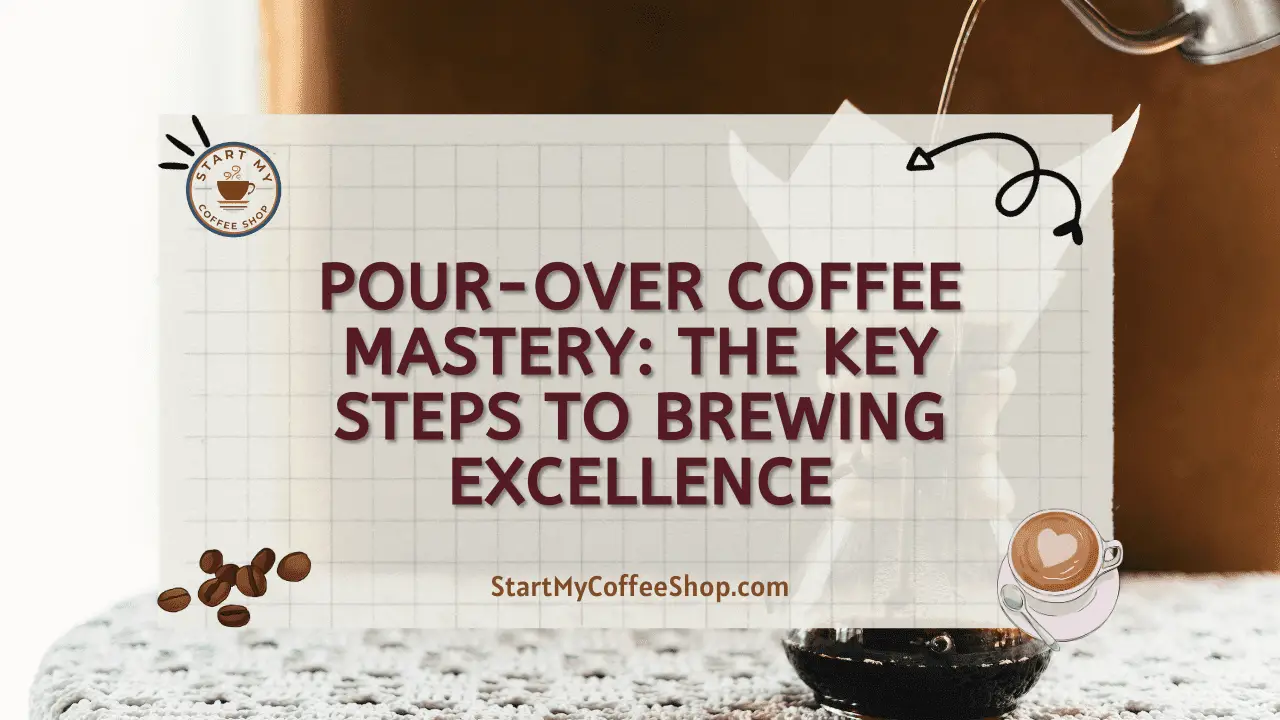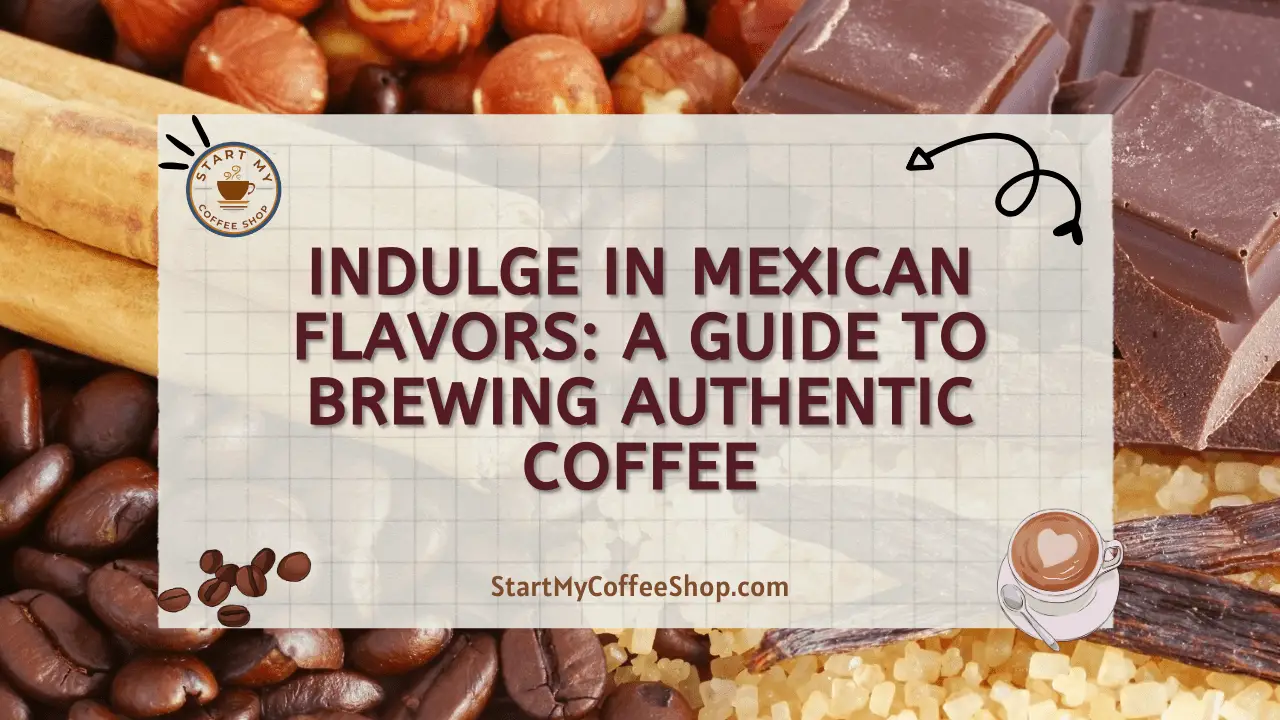Pour-over coffee is popular among coffee lovers because of its ability to extract specifics and produce a clean, balanced cup of coffee. It’s a brewing method that gives you complete control over the brewing process, resulting in a more personalized and pleasant coffee experience.
To make pour-over coffee, you should place a filter in a pour-over dripper, add freshly ground coffee, pour hot water slowly in circular motions over the coffee, and let it drip into a cup below. Experiment with coffee-to-water ratio and brewing time for desired taste.
In this article, we’ll delve into the art of creating pour-over coffee and go over the processes to get a great brew that meets your taste preferences.
Gather the Equipment
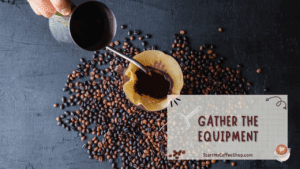
It is essential to obtain the appropriate tools before starting your pour-over coffee brewing experience. Here is a list of everything you’ll need to make sure your coffee is brewed and tastes great.
- Pour-Over Dripper: At the center of the pour-over brewing technique is the pour-over dripper. There are many available styles, including the V60, Chemex, and Kalita Wave. Every type has distinctive qualities that have an impact on the brewing procedure and the final cup of coffee. When deciding which dripper will work best for you, take into account your particular tastes and brewing style.
- Filters: By capturing coffee grounds and letting the brewed coffee flow through while filtering out sediment and oils, filters are essential to the pour-over brewing process. Make sure your filters are the right size for your particular pour-over dripper. The rate of extraction and the final flavor of your coffee can be affected by the thickness and design of the filters you use.
- Kettle: To boil water to the proper temperature for pour-over brewing, you’ll need a kettle. Choose a kettle with a gooseneck spout, which has a narrow spout. You can accurately and uniformly pour hot water over the coffee grinds because of the design’s excellent control over water flow.
- Grinder: The best pour-over brewing outcomes require an investment in a high-quality grinder. It is strongly advised to use a burr grinder because it offers constant particle size and lets you change the grind settings to suit your preferred brewing technique. Your coffee beans will be fresh and the best taste will be extracted if you grind them right before brewing.
- Scale: When making pour-over coffee, a scale is a useful tool for accurate measurements. It makes it possible for you to precisely measure your coffee and water, guaranteeing the ideal coffee-to-water ratio. Measuring consistently helps ensure the consistency of your brews and enables experimentation and tweaking to produce the flavor you want.
- Timer: Keeping track of the brewing period is essential for managing the extraction procedure. A timer makes it easier to maintain consistency throughout the brewing process, allowing you to experiment with various brewing times and change various settings to fine-tune the flavor profile of your coffee. It helps you recreate your preferred pour-over coffee and guarantees consistent results with every brew.
Read more about: Experience the Creamy Delight: How to Make Bulletproof Coffee from Scratch
Choose High-Quality Coffee Beans
The first step in creating the greatest pour-over coffee is using high-quality coffee beans as your base. Selecting the best beans can have a big impact on the tastes, smells, and overall satisfaction of your cup.
Coffee beans should be as fresh as possible. Pre-ground coffee should be substituted with freshly roasted whole beans. Coffee beans contain volatile substances that start to break down when they come into contact with oxygen. This process is sped up by grinding, which results in flavor and aroma being lost. You can guarantee a cup of coffee that is more bright and flavorful by starting with whole beans.
Another important step to achieving the ideal pour-over coffee is experimentation. Unique flavor profiles are offered by various coffee origins and roasts. Discover the distinctive qualities of beans from diverse places, such as Ethiopia, Colombia, or Costa Rica, each of which can range from fruity and floral to nutty and chocolatey. Different flavor nuances are revealed by varying the roast level, from light to dark. Explore the world of coffee and let your palate lead you to your favorite flavors.
Supporting regional specialty coffee roasters enables access to freshly roasted beans as well as promotes sustainability and moral behavior. Your beans will be freshly roasted and brimming with flavor because local roasters frequently place a high priority on freshness. They might be in close contact with coffee producers, assuring moral sourcing procedures and assisting local communities.
When buying coffee, check for labels or information that lists the origin, roast date, and any fair trade or sustainable certifications for the beans. Because specialty coffee roasters frequently disclose their sourcing procedures, you can be confident that both quality and ethical considerations are supported by your coffee journey.
Grind Your Coffee
To achieve the best flavor extraction and freshness, grinding your coffee beans right before brewing is an essential step in the pour-over coffee procedure. The finished cup’s flavor and quality are significantly influenced by the grind size and consistency.
Pour-over coffee brewing is strongly advised, therefore use a burr grinder. Burr grinders offer more exact control and result in a more constant grind than blade grinders, which can yield inconsistent particle sizes. The water will run uniformly through the coffee bed and extract flavors more evenly if the consistency is right.
For pour-over coffee, a medium-fine grind that resembles granulated sugar is excellent. It’s crucial to remember that the precise grind size can change according to the pour-over dripper you’re using and your taste preferences. To get the best extraction from different pour-over drippers, a few little changes can be needed.
Greater surface area contact with the water is made possible by a finer grind, which results in stronger flavors in the cup. A fine grind might cause over-extraction, which can result in a bitter or astringent flavor if the brewing period is prolonged. On the other side, a coarser grind could result in under-extraction, which would leave the flavor profile missing and weak.
It’s recommended to start with a medium-fine grind and make little changes from there to find the ideal grind size. Taste the resulting cups while keeping an eye on the water flow rate. Try a finer grind if the coffee brews too quickly and tastes weak. Choose a little coarser grind if the brew is slow and tastes too strong or bitter. Finding the perfect grind size for your particular taste may need a few brews.
Remember to keep a record of your favorite grind size and the amount of time needed to brew for the flavors you want. You can reliably recreate your preferred pour-over coffee using this information as a handy reference point for subsequent brews.
Preparing the Pour-Over Dripper and Filter
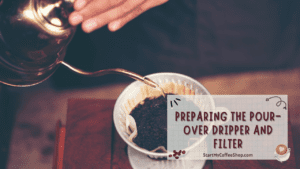
The next step is to carefully set up the equipment before beginning the brewing process once you have your pour-over dripper and filter ready. This pre-brewing phase guarantees proper extraction and aids in preserving the coffee’s temperature.
Put the pour-over dripper on top of your cup or carafe to start. The vessel you choose will depend on your preferences and how much coffee you plan to brew. Make sure the dripper is firmly positioned on top to provide a solid brewing platform.
After that, put a filter inside the dripper. The filter serves as a barrier, letting the brewed coffee flow freely while keeping coffee grounds from getting into your cup. Make sure the filter is positioned correctly and that it completely encloses the dripper’s surface.
It is vital to rinse the filter with hot water before adding coffee grinds. This action has several purposes. It cleans the filter of any paper particles or flavor to guarantee a pure and unadulterated brew. Rinsing minimizes heat loss during the brewing process by assisting in the dripper’s preheating. Further assisting in maintaining the coffee’s temperature as it comes into touch with the vessel is preheating the cup or carafe by pouring hot water into it.
Pour hot water over the filter in a circular motion, gradually going outward from the center, to rinse it. This procedure aids in moistening the filter as a whole and permits water to pass through, carrying any pollutants with it. Throw away the water that was used for rinsing.
You are prepared to start the brewing process after rinsing the filter and heating the dripper. The coffee is kept at the ideal temperature for enjoyment throughout extraction thanks to the preheated dripper and vessel, which also ensures that the temperature of the coffee remains constant.
Read more about: Exploring Innovative and Creative Cold Brew Coffee Recipes: A Delightful Journey of Flavor
The Brewing Process
A well-balanced brew depends on achieving the proper coffee-to-water ratio, which is important. Use a 1:16 coffee-to-water ratio as a general starting point (for example, 30 grams of coffee for 480 grams of water). Try out several ratios to determine your perfect strength.
- Blooming: Begin by evenly saturating the coffee grounds with a little amount of hot water (about twice the weight of your coffee). The coffee should bloom for around 30 seconds. This procedure makes the grounds ready for the best extraction while allowing the gases to escape.
- The Pouring Technique: Start slowly flowing water outward from the center in a circular motion. To ensure that all of the grounds are evenly moistened, strive for an even pour. Pouring straight onto the filter should be avoided as it could cause uneven extraction.
- Brewing Time: Pour-over coffee typically requires a total of 2 to 4 minutes for brewing. To create the desired flavor profile, alter the grind size, pouring speed, and brewing duration. Longer brewing times extract more flavors, but they could also make the cup stronger and possibly bitter.
- Extraction and Drip Rate: Throughout the brewing process, the coffee should drip steadily. Try a finer grind or a slower pouring pace if the coffee is flowing too quickly. If the drip is too sluggish, change the grind or the pouring speed.
Enjoying Your Pour-Over Coffee
It’s time to enjoy your hard work after patiently waiting for the brewing process to be finished and revel in a delicious cup of pour-over coffee. After the coffee has finished brewing, carefully take the pour-over dripper out of the cup or carafe. Dispose of the used filter properly before throwing it away.
Take a sip and appreciate the painstakingly extracted tastes and subtleties with your cup in hand. Take note of how the pour-over technique has emphasized the harmony of acidity, sweetness, and body in the beverage. Pay attention to the delicate flavors, which, depending on the coffee beans and your brewing method, might range from fruity and floral to chocolaty or nutty.
Pour-over coffee can be enjoyed as-is, savoring the purity and richness of the brew, or it can be tailored to your preferences. To moderate the taste and give the dish a creamier texture, add milk or cream. Add a little sugar, honey, or your chosen sweetener to your cup to make it sweeter. To fit your taste preferences, experiment with various milk substitutes or flavorings.
Frequently Asked Questions
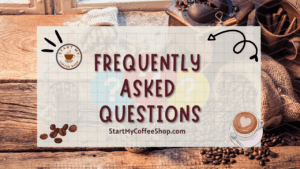
What water temperature works best for pour-over coffee?
Pour-over coffee requires water that is between 195°F (90°C) and 205°F (96°C) in temperature. This temperature range guarantees optimum flavor extraction without burning the coffee grounds. You can assist yourself get the desired water temperature by using a gooseneck kettle with an integrated thermometer.
How can I pick the best pour-over dripper for my coffee-brewing needs?
Depending on your preferences and brewing style, you can choose a pour-over dripper. The V60, Chemex, and Kalita Wave are common choices. A clean and tasty cup is produced by the V60, which is renowned for its adaptability and control. The Chemex produces a smooth, full-bodied brew because of its larger filters. The Kalita Wave’s flat-bottom construction provides reliable extraction. When choosing a dripper, take into account elements like filter accessibility, brew volume, and preferred flavor qualities.
Are pour-over coffee filters reusable?
Although it is technically conceivable, it is typically not advised to reuse pour-over coffee filters. Coffee filters take up oils and residues from the coffee, which when used again might result in odd flavors and a less pure brew. The best taste and clarity are ensured by using a new filter for every brew. But there are several washable, reusable metal filters for pour-over brewing that provide a more eco-friendly choice.
To learn more on how to start your own coffee shop, check out my startup documents here.
Disclaimer: The information provided by StartMyCoffeeShop.com (“The Site”) is for general informational purposes only. All information on the Site is provided in good faith. However, we make no representation or warranty of any kind, express or implied, regarding the accuracy, adequacy, validity, reliability, availability, or completeness of any information on the Site. Under no circumstance shall we have any liability to you for any loss or damage of any kind incurred as a result of the use of the Site or Reliance on any information provided on the Site. Your use of the Site and reliance on any information on the Site is solely at your own risk. This blog post is for educational purposes only and does not constitute legal advice. Please consult a legal expert to address your specific needs. Terms and Conditions. (https://startmycoffeeshop.com/terms-and-conditions/)

Hi! I’m Shawn Chun
My adventure in coffee began when I first launched my first coffee shop back in the early 2000s. I had to figure out so many things on my own and to make it worse within 2 years of opening two large corporate coffee chains moved in just blocks away from me!
As I saw smaller and even some larger coffee shops in the neighborhood slowly lose customers to these giant coffee chains and slowly close up shop, I knew that I had to start getting creative…or go out of business.
I (like you may be) knew the coffee industry well. I could make the best latte art around and the foam on my caps was the fluffiest you have ever seen. I even had the best state-of-the-art 2 group digital Nuova Simonelli machine money could buy. But I knew that these things alone would not be enough to lure customers away from the name brand established coffee shops.
Eventually, through lots of trial and error as well as perseverance and creativity I did find a way to not only survive but also thrive in the coffee/espresso industry even while those corporate coffee chains stayed put. During those years I learned to adapt and always faced new challenges. It was not always easy, however, in the end, I was the sole survivor independent coffee shop within a 10-mile radius of my location. Just two corporate coffee chains and I were left after that year. All told the corporate coffee chains took down over 15 small independent coffee shops and kiosks and I was the last one standing and thriving.
Along the years I meet others with the same passion for coffee and I quickly learned that it is not only “how good a barista is” that makes a coffee shop successful, but the business side of coffee as well.
Hence why I started this website you are on now. To provide the tools and resources for up and coming coffee shop owners to gain that vital insight and knowledge on how to start a coffee shop successfully.
Stick around, browse through my helpful blog and resources and enjoy your stay! With lots of LATTE LOVE!
Shawn

